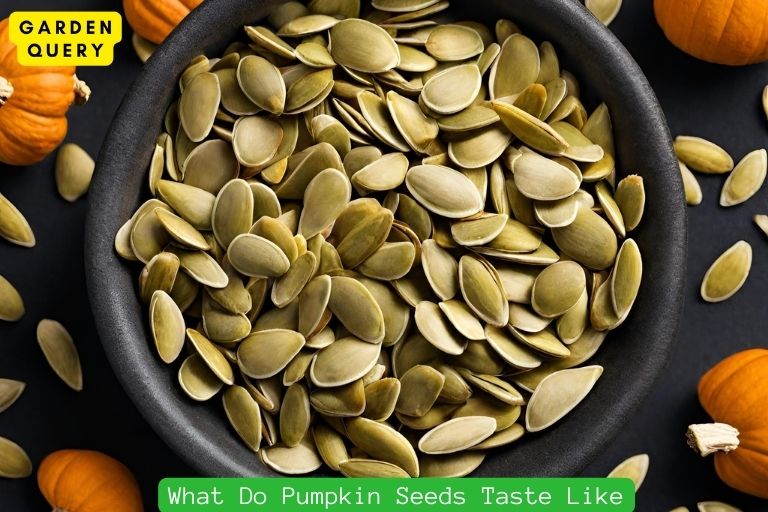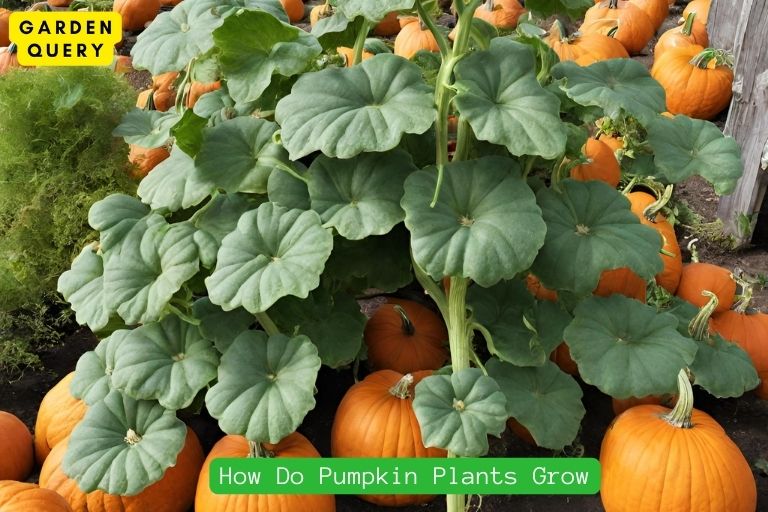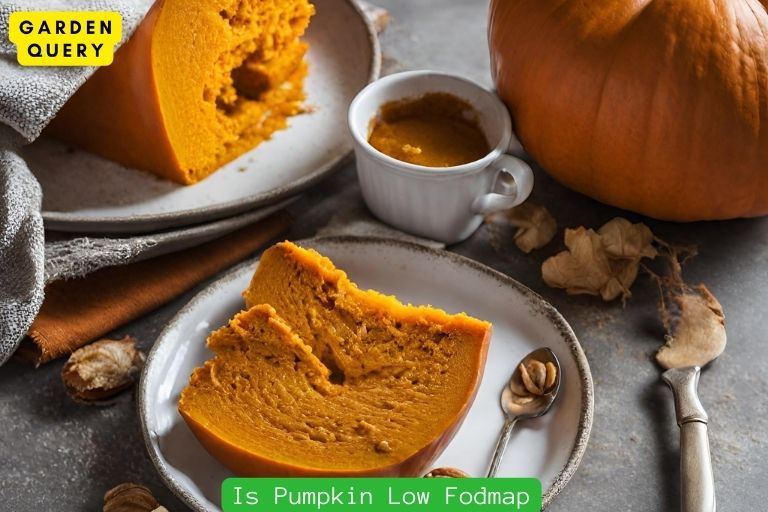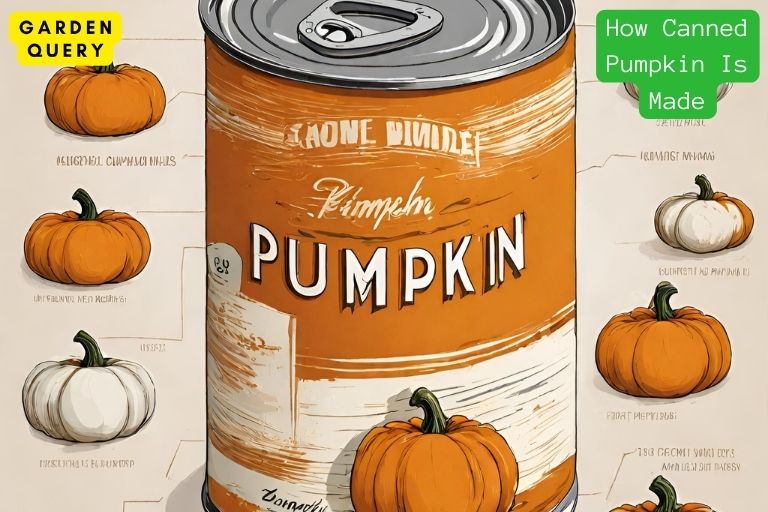What Do Pumpkin Plants Look Like? Lobed Leaves!
Pumpkin plants are characterized by large, lobed leaves, sprawling vines, and vibrant yellow flowers. As they grow, they produce distinctive, round, and ribbed fruits that come in various sizes and colors, ranging from deep orange to pale yellow or even green.
Pumpkin plants, belonging to the gourd family, have distinct visual features. Their leaves are typically large and lobed, providing ample shade and protection for the developing fruits.
The plants develop sprawling vines that can extend over a considerable area. Pumpkin plants also produce vibrant, large yellow flowers.
These flowers eventually give rise to the classic pumpkin fruit, which is typically round, ribbed, and varies in size and color, with shades of deep orange being the most common. However, they can also appear in hues of pale yellow or green.
Key Takeaway
Characteristics of Pumpkin Plants

Pumpkin plants are fascinating to observe and grow in your garden. Understanding their key characteristics can help you identify them and ensure they thrive. Here are some notable features of pumpkin plants.
1. Leaves: Pumpkin plants have large, lobed leaves that are typically green in color. The leaves are deeply veined, providing a textured appearance. They often have jagged edges and a slightly rough texture.
2. Vines: Pumpkin plants are vining plants that spread out and grow rapidly. They have long, trailing stems that can extend several feet in length. These vines help the plant to explore its surroundings and find support as it grows.
3. Flowers: Pumpkin plants produce vibrant, yellow-orange flowers that are typically large and showy. The flowers are typically male and female, with the female flowers developing the characteristic pumpkin fruit. Bees and other insects play a vital role in pollinating the flowers.
4. Fruit: The fruit of the pumpkin plant is, of course, the iconic pumpkin. Pumpkins come in various shapes, sizes, and colors, ranging from small, round varieties to large, oblong ones. They have a tough, outer rind that protects the pulpy flesh and seeds inside. The color of the pumpkin can range from orange to yellow, green, or even white.
5. Growth Habit: Pumpkin plants are fast-growing and vigorous. With the right conditions, such as adequate sunlight and nutrient-rich soil, they can grow rapidly and spread across a considerable area. The expansive vines and large leaves create a lush and sprawling plant.
6. Prickles: When examining a pumpkin plant, you may notice small, sharp prickles along the stems and leaves. These prickles serve as a defense mechanism against potential threats and herbivores.
7. Seasonality: Pumpkins are warm-season plants that thrive in the summer and early fall. They require a long growing season, typically around 75 to 100 days, to reach maturity. Planting them at the right time ensures optimal growth and a bountiful harvest.
Understanding the characteristics of pumpkin plants not only helps you identify them but also aids in their proper care and cultivation. Whether you’re a seasoned gardener or a beginner, the distinct features of pumpkin plants make them a delightful addition to any garden.
Leaves, Vines, and Flowers

When it comes to identifying pumpkin plants, the leaves, vines, and flowers are key features to look out for.
Let’s start with the leaves. Pumpkin plants have large, broad leaves with a rough texture. The leaves are deeply lobed and have a distinct dark green color. They are attached to long, sprawling stems that can reach several feet in length. The edges of the leaves are serrated, giving them a jagged appearance.
As for the vines, pumpkin plants are known for their vigorous growth. The vines are thick and sturdy, able to support the weight of the developing pumpkins. They have a tendency to spread out and cover a large area, so make sure to provide ample space for the plant to grow. The vines can also climb and scramble, attaching themselves to nearby structures or vegetation.
gardenquery.com
When pumpkin plants reach maturity, they produce beautiful flowers. The flowers are typically bright yellow or orange and have a distinct shape. They have large petals and a trumpet-like center, which acts as the reproductive organ of the plant. Pumpkin flowers are known for their short lifespan, usually lasting only a day or two before withering and falling off.
By familiarizing yourself with the leaves, vines, and flowers of pumpkin plants, you’ll be able to easily recognize and appreciate these wonderful plants. Whether you’re planning to grow your own pumpkins or simply admire them in a garden, understanding their physical characteristics adds to the enjoyment. So keep an eye out for those large, lobed leaves, sprawling vines, and vibrant flowers on your next pumpkin plant encounter.
gardenquery.com
Growth Patterns and Structure

When it comes to pumpkin plants, they possess a unique and fascinating growth pattern and structure. Understanding these aspects can provide you with valuable insights into the nature of these plants.
Pumpkin plants belong to the Cucurbitaceae family, which also includes cucumbers, melons, and squash. They are characterized by their sprawling habit, with long trailing vines that can extend several feet in length. These vines have tendrils that aid in the plant’s climb and attach to nearby structures or trellises for support.
The leaves of a pumpkin plant are large and broad, with a distinct lobed shape. They are often medium to dark green in color, providing an attractive contrast against the vibrant orange of the mature fruit. These leaves play a crucial role in photosynthesis, absorbing sunlight and converting it into energy for the plant’s growth and development.
gardenquery.com
One distinguishing feature of pumpkin plants is their vibrant yellow flowers. These flowers, known as pumpkin blossoms, are typically large and showy.
They have both male and female parts, with the male flowers appearing first to attract pollinators like bees. The female flowers, identified by the small fruit at their base, develop later and require pollination to produce a pumpkin.
As the plant continues to grow and develop, it forms thick, sturdy stems that support both the weight of the vines and the developing fruit. These stems are covered in prickly hairs and can have a rough texture.
Along the main stem, you may notice nodes or joints where leaves and tendrils emerge. These nodes play a crucial role in the growth of the plant, determining where new branches will form.
When the pumpkin fruit begins to form, it starts as a small green bump near the base of the female flower. Over time, it gradually swells and expands, taking on the well-known round or oblong shape. The size and color of the pumpkin vary depending on the specific variety grown.
Understanding the growth patterns and structure of pumpkin plants can help you care for them more effectively. By providing the necessary support, sunlight, and water, you can ensure healthy vine growth and encourage the development of abundant and vibrant pumpkins.
Remember to observe and appreciate the unique beauty of the pumpkin plant as it grows, from the sprawling vines and expansive leaves to the colorful flowers and ultimately, the harvest of delightful pumpkins.
Identifying Pumpkin Plants

Identifying pumpkin plants can be quite easy once you know what to look for. Pumpkins belong to the Cucurbitaceae family, which also includes cucumbers, melons, and gourds.
Here are some key characteristics to help you identify pumpkin plants:
- Leaves: Pumpkin plants have large, lobed leaves. Each leaf consists of three to five lobes, and they have a rough texture. The leaves are typically medium to dark green in color and have a distinct veining pattern.
- Stem: The stem of a pumpkin plant is thick, sturdy, and prickly. It is often covered in tiny hairs and has a rough texture. The stem is typically green or greenish-brown in color.
- Vine: Pumpkin plants grow long, sprawling vines. These vines can reach several meters in length and tend to creep along the ground or climb on nearby structures. The vines are covered in small, rough hairs.
- Flowers: Pumpkin plants produce both male and female flowers. The male flowers have long, thin stems and grow in clusters. The female flowers, which eventually develop into pumpkins, have a small bulbous swelling at the base of the flower.
- Fruit: Of course, the most recognizable characteristic of a pumpkin plant is its fruit. Pumpkins come in a variety of shapes, sizes, and colors. They can range from small, round pumpkins to large, elongated ones. The outer surface is usually smooth or slightly ribbed, and the color can vary from orange to yellow, green, or even white.
By familiarizing yourself with these characteristics, you can easily identify pumpkin plants in your garden or when you come across them in your community.
Remember, it's essential to provide them with proper care, including regular watering, adequate sunlight, and enough space for the vines to grow and spread. With a little patience and care, you can enjoy the beauty
Conclusion
Pumpkin plants are fascinating and versatile plants that go through several stages of growth and development. From the initial seed germination to the emergence of cotyledons, the vigorous growth of vines, and the formation of male and female flowers, pumpkin plants transform to produce the iconic fall fruit we all know and love.
Understanding the different parts and stages of pumpkin plants can be beneficial for both gardeners and enthusiasts alike. By knowing what to look for, you can ensure proper care and maintenance of your pumpkin plants, leading to healthy growth and a bountiful harvest.
Remember, pumpkin plants require adequate sunlight, well-drained soil, and consistent watering to thrive. Regular monitoring and addressing any pests or diseases promptly will ensure the plants remain healthy throughout their lifecycle.
Whether you’re growing pumpkins for decorative purposes, culinary delights, or for fun with family and friends, the process of watching the plant grow and witness the transformation is incredibly rewarding. So don’t be afraid to get your hands dirty and embark on a pumpkin-growing adventure!
gardenquery.com
Next time you come across a pumpkin plant, take a moment to appreciate its beauty and intricacy. From the sprawling vines and large green leaves to the vibrant blossoms and eventually the plump pumpkins, these plants play an essential role in our fall traditions and celebrations.
So go ahead and plant some pumpkin seeds, tend to them with care, and let nature work its magic. In return, you’ll not only have a harvest of delicious pumpkins but also a deeper connection with the natural world and a profound appreciation for the wonders of plant life. Happy growing!
- Best Therapists In Dallas - February 1, 2024
- Holly Willoughby Husband: Holly Willoughby’s Love Story - January 30, 2024
- Holly Willoughby Dress: 5 Style Secrets and 7 Must-Know Career Milestones - January 30, 2024





